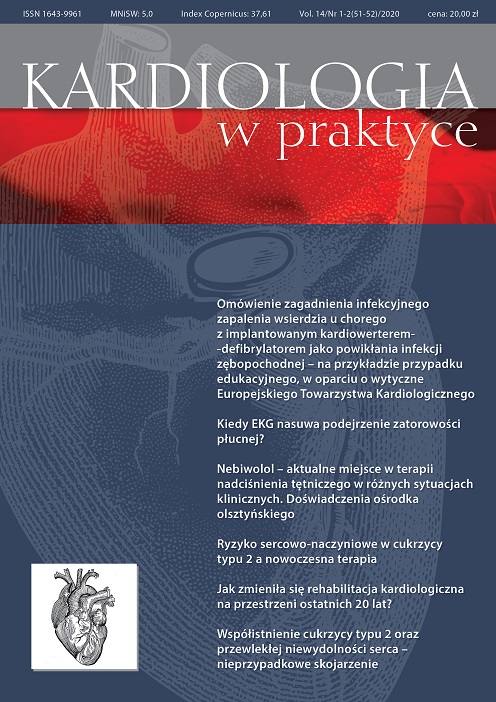When does ECG suggests a suspicion of a pulmonary embolism? ECG changes in pulmonary embolism Case report
Main Article Content
Abstract
Pulmonary embolism (PE) is a life-threating condition of very nonspecific symptoms. In this article we describe ECG changes which may suggest PE suspicion, ECG changes related to worse prognosis and we present the ECGs of two patients with confirmed in CT pulmonary angiography PE.
Downloads
Article Details

This work is licensed under a Creative Commons Attribution-NonCommercial 4.0 International License.
Copyright: © Medical Education sp. z o.o. This is an Open Access article distributed under the terms of the Attribution-NonCommercial 4.0 International (CC BY-NC 4.0). License (https://creativecommons.org/licenses/by-nc/4.0/), allowing third parties to copy and redistribute the material in any medium or format and to remix, transform, and build upon the material, provided the original work is properly cited and states its license.
Address reprint requests to: Medical Education, Marcin Kuźma (marcin.kuzma@mededu.pl)
References
2. Zalecenia dotyczące stosowania rozpoznań elektrokardiograficznych. Dokument opracowany przez Grupę Roboczą powołaną przez Zarząd Sekcji Elektrokardiologii Nieinwazyjnej i Telemedycyny Polskiego Towarzystwa Kardiologicznego, pod patronatem Polskiego Towarzystwa Kardiologicznego.
3. Bryniarski L. Badanie EKG w ocenie rokowania chorych z zatorowością płucną. Kardiol Pol. 2009; 67: 7.
4. Jaff MR, McMurtry MS, Archer SL et al. Management of Massive and Submassive Pulmonary Embolism, Iliofemoral Deep Vein Thrombosis, and Chronic Thromboembolic Pulmonary Hypertension, A Scientific Statement From the American Heart Association. Circulation. 2011; 123(16): 1788-830.

